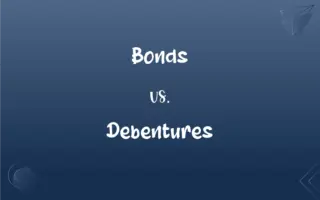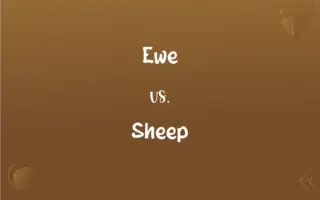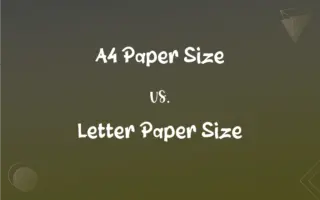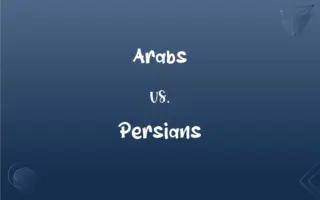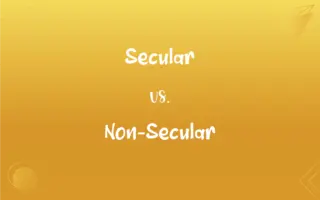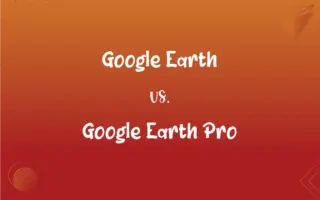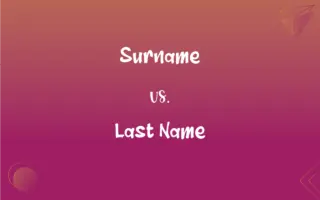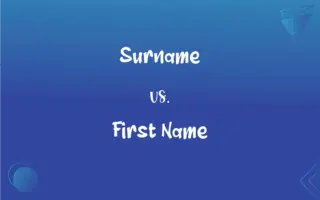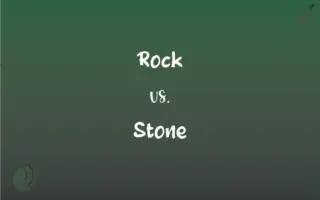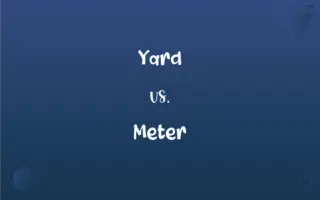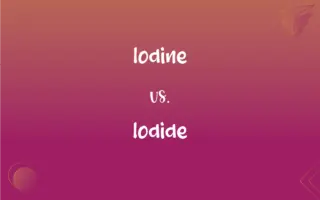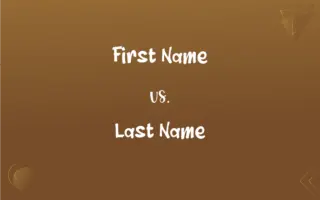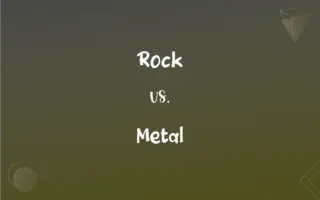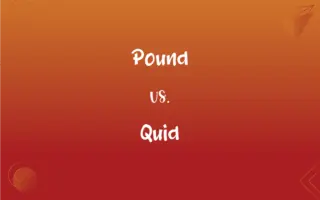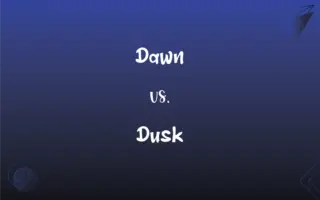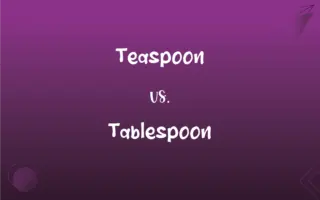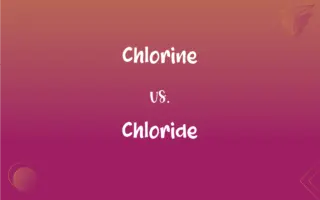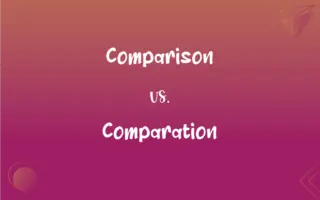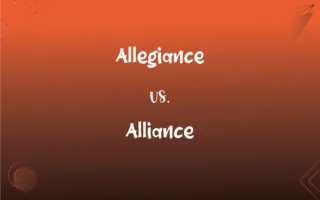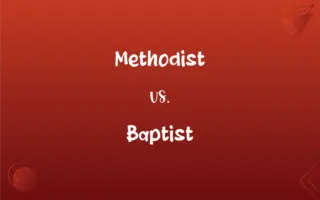Ivory vs. White: What's the Difference?
Edited by Aimie Carlson || By Harlon Moss || Updated on June 26, 2024
Ivory is a pale, yellowish-white color, often associated with elephant tusks, while white is a color of pure lightness without hue.
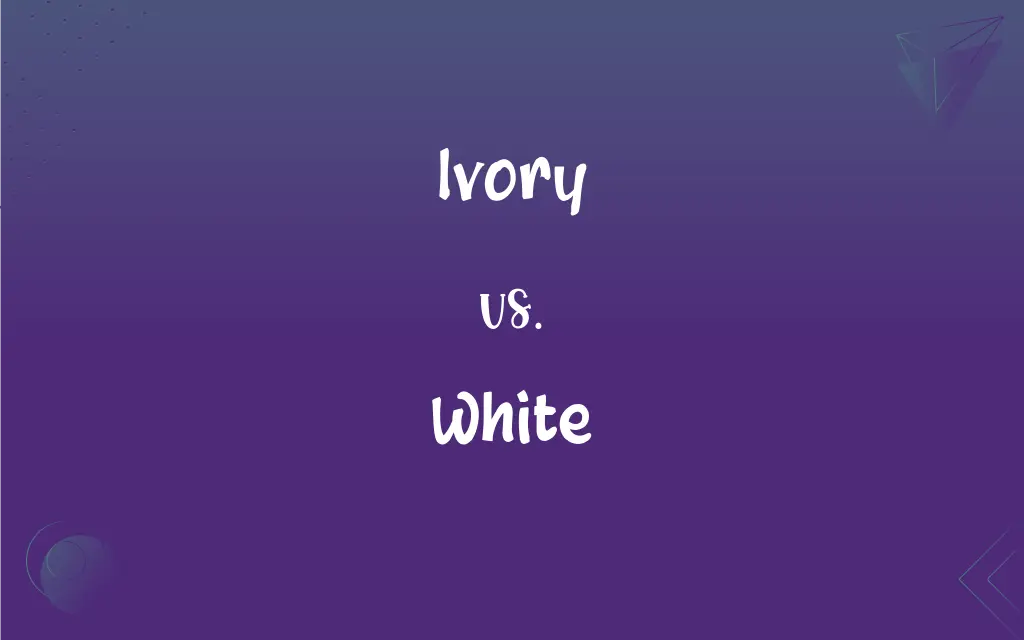
Key Differences
Ivory and white are both shades often described on the lighter end of the color spectrum, but they possess distinct undertones and associations. Ivory, as a shade, has a creamy or yellowish tint to it. The name "ivory" originates from the material from which elephant tusks and similar animal teeth are made. White, in contrast, represents the purest form of lightness in color theory. White reflects all colors of the visible spectrum to the eye, resulting in what we perceive as a "colorless" shade.
In practical applications, especially in fashion and interior design, the choice between ivory and white can be quite significant. An ivory wedding dress, for instance, might be preferred by those wanting a softer, vintage, or classic look. A white dress, however, exudes a sense of purity, simplicity, and modernity.
Cultural associations with ivory and white also differ. While white often symbolizes purity, innocence, and cleanliness, ivory, due to its origin, may bring to mind issues of wildlife conservation and ethics. Thus, the terms aren't just about color but encompass broader societal meanings.
Comparison Chart
Hue
Pale yellowish-white
Pure lightness without hue
Origin of Name
Derived from elephant tusks
Derived from Old English "hwīt"
ADVERTISEMENT
Cultural Associations
Wildlife conservation, vintage
Purity, innocence, simplicity
Undertones
Creamy, yellowish
None
Common Uses
Vintage items, classic designs
Neutral backgrounds, modern designs
Ivory and White Definitions
Ivory
Hard white material from tusks and teeth of certain animals.
The museum displayed an ancient carving made of ivory.
White
A classification of light-colored wines.
She ordered a glass of white to accompany her fish.
ADVERTISEMENT
Ivory
A shade of white with a yellowish tint.
She chose an ivory dress for her vintage-themed party.
White
Lacking hue and grayness.
The walls were painted a clean white to brighten the room.
Ivory
A term associated with the illegal trade of tusks.
The ivory trade has endangered many elephant populations.
White
The color of pure snow or milk.
She wore a stark white dress to the party.
Ivory
A material of high value historically used in art and decoration.
Many pianos historically had keys made of ivory.
White
A neutral background in design.
The gallery had white walls to highlight the art pieces.
Ivory
A creamy shade often used in vintage designs.
The room was painted in a soft ivory, giving it a classic feel.
White
Morally or spiritually pure.
His intentions were as white as snow.
White
The achromatic color of maximum lightness; the color of objects that reflect nearly all light of all visible wavelengths; the complement or antagonist of black, the other extreme of the neutral gray series. Although typically a response to maximum stimulation of the retina, the perception of white appears always to depend on contrast.
FAQs
What is the primary difference between ivory and white?
Ivory has a yellowish tint, while white is pure lightness without hue.
Is white a color or the absence of color?
In terms of light, white is a combination of all colors; in terms of pigment, it's the absence of color.
Can ivory be used to describe things other than color?
Yes, it can refer to the material from which tusks and certain teeth are made.
How does the ivory trade impact wildlife?
It has led to significant declines in elephant populations due to poaching.
Why is it called ivory?
The term originates from the material of elephant tusks and similar animal teeth.
Which is considered more neutral, ivory or white?
White is generally considered more neutral.
Why might someone choose an ivory dress over a white one?
Ivory can offer a softer, vintage, or classic look.
How does the perception of white vary in fashion?
White can be seen as modern, clean, or indicative of purity, especially in wedding fashion.
Is it illegal to trade in ivory?
Many countries have banned or restricted the ivory trade due to conservation concerns.
What emotions or concepts does white often symbolize?
Purity, innocence, simplicity, and cleanliness.
How is white used in design?
It's often used as a neutral background or to convey modernity.
Do all cultures view white as a symbol of purity?
No, cultural interpretations of color can vary.
Is ivory more common in certain types of products?
Yes, especially in vintage items or classic designs.
Are there alternatives to real ivory in art and manufacturing?
Yes, synthetic ivories or other materials are often used today.
Does white have religious significance?
In many cultures, white has spiritual or religious connotations, often representing purity or divinity.
Why is ivory valued historically?
Its rarity, beauty, and workability made it prized for art and decoration.
Is the color ivory the same as the material ivory?
No, the color is named after the material, but they aren't the same.
Is there a difference in the warmth of ivory and white?
Yes, ivory tends to be warmer due to its yellowish undertones, while white is neutral.
Is there a moral controversy associated with ivory?
Yes, due to the illegal and harmful ivory trade threatening elephant populations.
In what contexts is white often used?
In design, art, fashion, and various cultural or religious contexts.
About Author
Written by
Harlon MossHarlon is a seasoned quality moderator and accomplished content writer for Difference Wiki. An alumnus of the prestigious University of California, he earned his degree in Computer Science. Leveraging his academic background, Harlon brings a meticulous and informed perspective to his work, ensuring content accuracy and excellence.
Edited by
Aimie CarlsonAimie Carlson, holding a master's degree in English literature, is a fervent English language enthusiast. She lends her writing talents to Difference Wiki, a prominent website that specializes in comparisons, offering readers insightful analyses that both captivate and inform.
